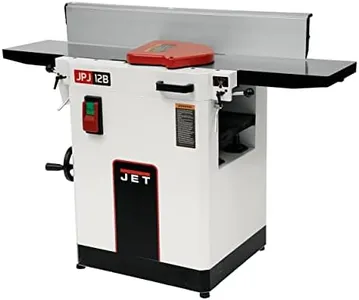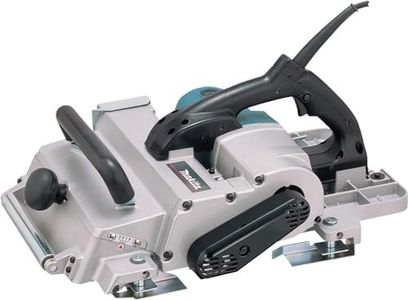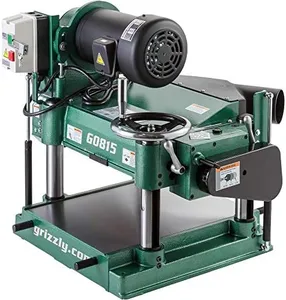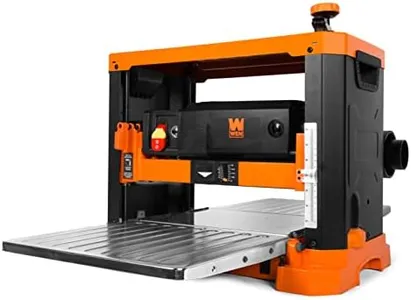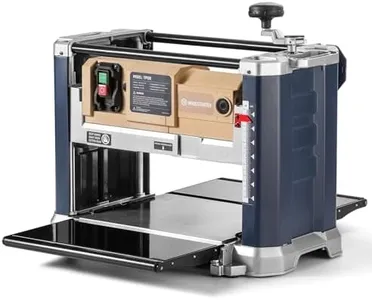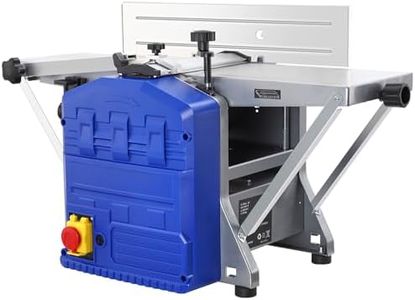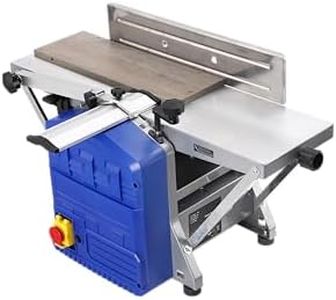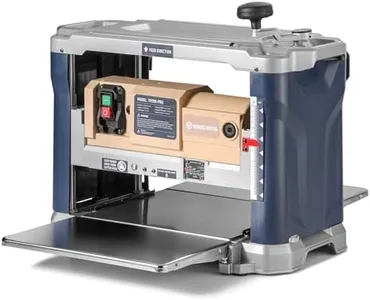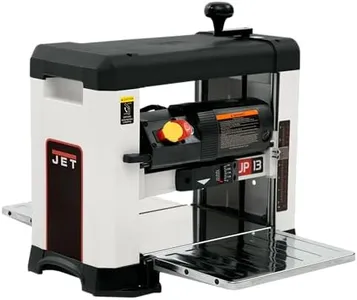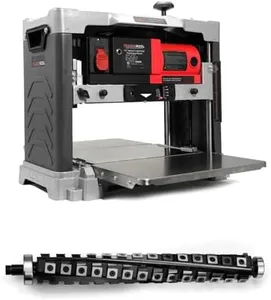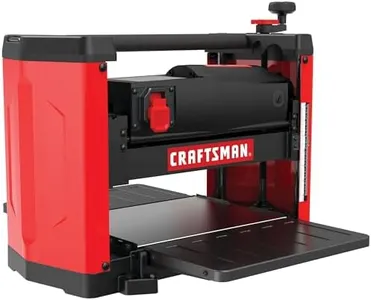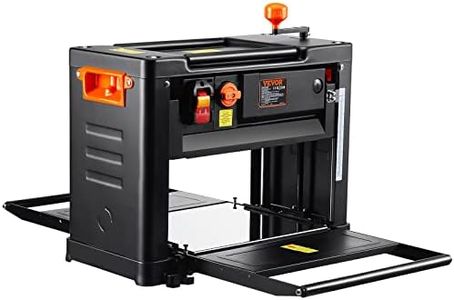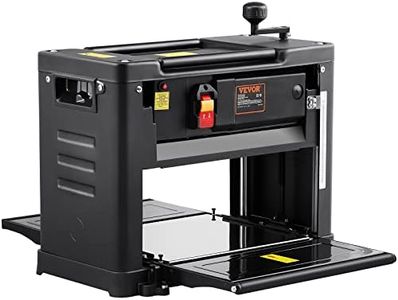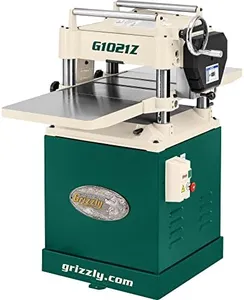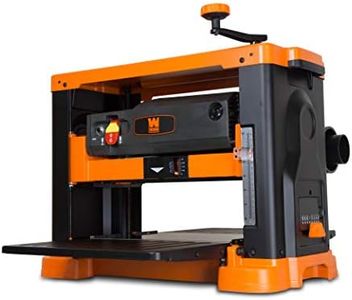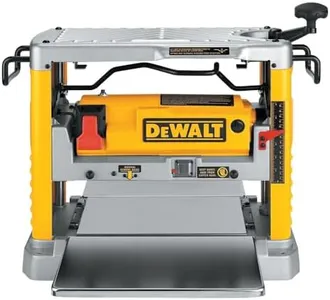10 Best Thickness Planer Machines 2025 in the United States
Our technology thoroughly searches through the online shopping world, reviewing hundreds of sites. We then process and analyze this information, updating in real-time to bring you the latest top-rated products. This way, you always get the best and most current options available.

Our Top Picks
Winner
Powermatic 22-Inch Planer, Helical Cutterhead, 7-1/2 HP, 230V 1Ph (Model 201HH)
The Powermatic 22-Inch Planer (Model 201HH) is a heavy-duty machine designed for professional woodworking. Its 22-inch cutting width and 0.19-inch cutting depth make it suitable for large projects. The 7-1/2 horsepower motor ensures powerful performance, and with a feed rate of up to 20 feet per minute, it can handle a high volume of work efficiently.
The helical cutterhead with 125 four-sided carbide knife inserts provides smoother and quieter cuts, which is a significant advantage for maintaining a pleasant working environment and achieving high-quality finishes. Additionally, the adjustable bed rollers and cast iron construction contribute to the machine's durability and stability, ensuring smooth operation even with rough or finished workpieces. The dust chute with a 5-inch port is a useful feature for effective dust collection, keeping the workspace cleaner and safer.
However, at 1430 pounds, this planer is extremely heavy, making portability a challenge. It is best suited for a stationary workshop setup rather than being moved around frequently. The Powermatic 22-Inch Planer is a robust and efficient machine ideal for professional woodworkers who require precision and high performance but may not be suitable for those who need a more portable solution.
JET 12-Inch Planer/Jointer, Helical Cutterhead, 3 HP, 230V 1Ph (Model JPJ-12BHH)
The JET 12-Inch Planer/Jointer (Model JPJ-12BHH) is designed for serious woodworkers and professionals. With a cutting width of 12 inches, it can handle larger boards, making it suitable for substantial projects. The helical cutterhead with 42 carbide inserts ensures rapid cutting and a high-quality finish, reducing the need for additional sanding.
The motor power is 3 HP, offering robust performance for both planing and jointing tasks. This machine can switch between these functions quickly without removing the fence, enhancing its versatility. The cutting depth of 0.13 inches allows for precise material removal, and the parallelogram design aids in accurate adjustments of the cut depth.
Additionally, the heavy-duty cast iron tables and one-piece steel stand add to its stability and accuracy, which is crucial for maintaining flatness and precision in woodworking projects. However, it's quite heavy at 453 pounds, making portability a challenge. It includes useful attachments like push blocks and a hex wrench. This planer/jointer is best suited for a stationary workshop environment rather than for users needing a portable solution.
Makita KP312 12-1/4" Planer
Most important from
24 reviews
The Makita KP312 12-1/4" Planer stands out with a powerful 15 AMP motor that can reach up to 12,000 RPM, making it excellent for quick and efficient wood planing. The large cutting width of 12-1/4 inches allows for broad and even cuts, which can be a significant advantage when working on larger pieces of wood. Additionally, the large depth setting knob makes adjusting the cutting depth straightforward, which is user-friendly for both beginners and experienced users.
The planer features a Poly "V" belt, which effectively transmits power to the blades, ensuring a smooth operation. The large ejection chute is designed to handle both wet and dry wood chips, reducing the chances of clogging, which is a common issue in many planers. It also has a front roller to help move the planer easily over rough surfaces, adding to its ease of use.
However, weighing 40.6 pounds, this planer is on the heavier side, which might affect its portability and ease of handling. It may not be the best choice for those needing a highly portable unit. The dust collection could also be an issue, as there is no mention of a dedicated dust collection system, which might require additional cleanup. This planer is best suited for professional woodworkers or serious hobbyists who need a robust and powerful tool for larger projects.
Most important from
24 reviews
Buying Guide for the Best Thickness Planer Machines
Choosing the right thickness planer machine can significantly impact the quality and efficiency of your woodworking projects. A thickness planer is used to trim boards to a consistent thickness and create a smooth surface. When selecting a thickness planer, it's important to consider several key specifications to ensure you get a machine that meets your needs and fits your workshop. Here are the key specs to look at and how to navigate them.FAQ
Most Popular Categories Right Now

